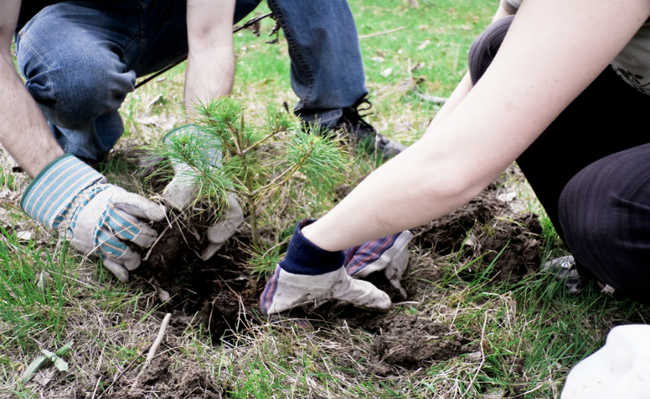Peaceful sleep? Find out what risks the mattress can bring and see how to avoid them
See how mattresses cause harm to health and learn about safe material alternatives

Can you imagine the mattress you sleep on every day and spend a third of your life on it? Mattresses for adults, children and babies are made of several layers of different materials, which can be natural or not. Most of the mattresses sold have components that are harmful to human health. Have you ever felt uncomfortable about the odor of a new mattress? Let's understand more about the risks of mattresses in your home.
The use of mattresses throughout history has its origins in Arab culture, and ended up being spread by Europeans. The product became more and more sophisticated, along with the importance given to beds.
The raw materials in its composition, such as horsehair, cotton and scraps were being replaced by other types of materials. With the transition from an industrial society to a risk society (according to Ulrich Beck's theory), these new materials started to offer more than comfort and became physical and epidemiological safety measures, through the addition of compounds flame retardants, fungicides, bactericides, among other forms of harmful chemistry.
Both foam and spring mattresses are made up of several layers. The manufacturing process of a mattress begins with the choice of the central part, then comes filling with foams and, finally, the cover layer for finishing the mattress.
In spring mattresses, metals are placed in the central part and then filled with foam. Spring materials are non-toxic to health and can be recycled. The negative impact on the environment caused by the use of springs is in the mining process.
In both spring and foam mattresses, various materials are used for filling and finishing:
Materials that have negative health impacts
Polyurethane is a plastic foam derived from petroleum that is among the most sold in the world, as it is cheap and light. A viscoelastic foam is made from polyurethane and has the property of adapting to body shapes over time.
In addition to the application of polyurethane in mattresses, this foam is used in shoe soles, sound insulation, car parts such as steering wheels and seats, decoration items, household products such as dishwashing sponges, sofas, among others (learn more "O is polyurethane?").
In the manufacture of polyurethane, compounds that are harmful to health are used. Toluene diisocyanate is present in almost all polyurethanes on the market. This toluene, at room temperature, is constantly released by the foam and through air or skin contact. This volatile organic compound (VOC), which is considered extremely toxic, causes asthma, fainting and accumulation of fluid in the lungs due to the unpleasant odor and gases released, causes headache, cough, eye irritation, feeling drunk and increases chances of cancer, being classified by the International Agency for Research on Cancer (IARC) as a possible carcinogen to humans (Group 2B). Polyurethane foam causes negative impacts on the environment because, in addition to containing toxic substances such as toluene, it is a material that is difficult to recycle, whose foam decomposition time can reach hundreds of years (learn more about polyurethane here).
Another polyurethane-derived foam is one that contains a small percentage of vegetable oils (soybean or castor bean), known as a soy-based foam or foam made from vegetables. Certainly, this type has less negative impact on the environment, such as reducing the use of oil, but it has the same negative effects on health because it is still made of polyurethane.
Synthetic latex is made from petroleum compounds and can be blended with natural latex to form a blend. In this synthetic latex manufacturing process, volatile organic compounds (VOCs) are added that pollute the air in homes and have a characteristic odor: styrene and butadiene. Styrene causes eye irritation, gastrointestinal problems and increases the risk of cancer (IARC Group 2B). Butadiene is classified by the IARC as a carcinogen (proven to be carcinogenic) and has the same effects as styrene.
flame retardants
Flame retardants are compounds that have the ability to reduce the flammability of a material that is normally highly flammable, such as plastics (learn more about flame retardants here). And although these substances are used as safety measures, they are notoriously very harmful to health. Contamination by antimony and halogenated flame retardants mainly represented by PBDEs (polybrominated diphenyl ethers) is related to the emergence of kidney, lung, heart, cancer, hormonal dysfunction and reproductive problems.
There are other less toxic flame retardants, such as boric acid and hydrated silica, which can be an option when you don't have much choice to purchase products with these compounds. Currently, there are already researches looking for non-toxic alternatives to flame retardants.
Less toxic and natural materials are sustainable alternatives
If the mattress you are buying, or even your current mattress, is composed of the materials listed below, you will be less exposed to toxic contaminants and, by applying sustainability as an ingredient in your choice, you will improve your quality of life.
natural latex
This material made from rubber tree sap is, of course, a bactericide. Often, volatile organic components are added in the manufacturing process. To take advantage of the benefits of natural latex, there are mattresses that are VOC-free.
Cotton
It is a natural product. When organic, it does not contain pesticides during the planting and growing phase. Cotton, which comes from traditional agriculture, has the addition of pesticides in its cultivation process. For both organic cotton and cotton from traditional agriculture, it is possible to add boric acid as a flame retardant (learn more here about the difference between traditional and organic agriculture). When using a cotton mattress, after the period in which it starts to decrease in volume, it is possible to refill it with cotton and have a "new" mattress. It is important to leave the cotton mattress in the sun every month or two.
There
Wool is a natural flame retardant because of the low amount of oxygen present in its fibers and because it takes 600°C to initiate combustion. It can rarely cause allergies, but this can vary from person to person.
Coconut and Bamboo Fiber
This material is natural, coming from coconut processing. Like wool, in some people it can trigger allergies. It is important to check because latex is often mixed with coconut fiber.
There are already researches that have tested the properties of bamboo fiber and concluded that the material can be a good alternative to foams made from polyurethane.
If you want to buy a mattress or other quilted products that do not pose a fire and health hazard due to toxic products, opt for wool, which is a natural flame retardant. Or for cotton, coconut fiber and natural latex that contain less toxic flame retardant compounds such as boric acid and hydrated silica.
It is also important to prevent the risk of fire, such as not smoking in bed, not leaving candles lit when sleeping, not letting children play in bed with objects such as lighters and kitchen lighters, and extinguishing candles when leaving the room.
Recycling of mattresses
The recycling of traditional mattresses, which have many layers of materials harmful to health, such as polyurethane foam, flame retardants and other compounds, such as glues, adhesives and bactericidal sprays, is very difficult due to this complexity and mixture of materials that are of difficult separation. In Brazil, the mattress recycling market is not widespread, making the process more costly. In other countries there are already companies and measures taken by governments, such as in Ohio, in the United States, and in Vancouver, in Canada, that work in the mattress recycling process. It is possible to recycle some mattress components, such as wood, springs, cotton and even foam.
The lifespan of a mattress is approximately 11 years, and despite this, many mattresses are discarded every day, taking up a lot of space in landfills and remaining for tens or hundreds of years until being degraded by the action of microorganisms and time.
It is now possible to assign a destination to the mattress you no longer use, click here and find out how.










